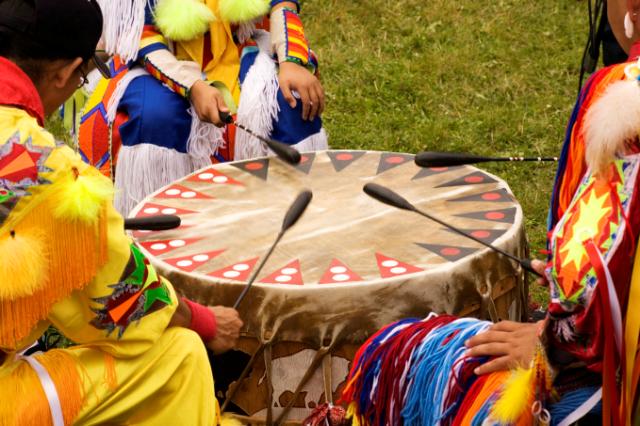Hope for Life Day Toolkit: Ideas for Implementing Cultural Activities

Annual or Special Event Powwows
- Powwows are celebrations and social gatherings. Friendly dance competitions and sacred traditions are found in this coming together of people. There is a circle in most dances, representing the circle of unity, the cycle of life. Dancers often follow the clockwise pattern of the sun. Some of the regalia and/or ornaments signify special events or honors in a person's life, religious traditions, or symbols rooted in legend.
- These events may be referred to by many names and can include a special focus on certain concerns (e.g., suicide prevention; honoring sobriety; remembering those lost to suicide). They also often emphasize inclusion of meaningful, local cultural components. Tribes may hold powwows in conjunction with tribal health fairs and other community-wide events as venues to reach out to, educate, and engage community members about the suicide prevention initiative.
- During pre-planning for the event, community members decide which cultural elements (or regalia or crafts, etc.) to have available for the Hope for Life Day powwow.
Be the Change Youth Club: The Center for Native American Youth
- In conjunction with programs offering suicide prevention services, this club hosts community and school-focused prevention activities and promotes community wellness. The Center for Native American Youth’s mission is to bring greater national attention to the issues facing Native American youth and to foster solutions with a special emphasis on youth suicide prevention.
- At a Hope for Life Day event, additional guidance and information about starting a club can be made available. In pre-planning for the event, a sponsor for the club (from a school or community-based organization, etc.) can be designated to meet with any interested youth. Invite the person to the first meeting of the interest group to continue planning for future events and activities.
Drum Circle
- A drumming circle or drum circle is a group of individuals who are creating and sharing a rhythmical, melodious, and harmonious experience. No experience is necessary. The primary instruments used in a drum circle are hand-held drums, but other instruments may also be used. Participants form a circle to play their instruments. They may stand or sit in a chair or on the ground. Drum circles may be held indoors, such as at holistic fairs, or outdoors, such as at powwows.
- The drum circle can be used as an outreach tool. The theme of suicide prevention and healthy living can be introduced to interested youth who are encouraged to participate.
- To learn more about how drum circles can facilitate drug, alcohol, and suicide intervention and prevention, read “Utilizing Drumming for American Indians/Alaska Natives with Substance Use Disorders: A Focus Group Study.”
Native Hope
- The Native Hope program intentionally creates a safe and sacred place through culture, spirituality, and humor for participants to address suicide, depression, trauma, violence, and substance abuse. Participants share openly and honestly about the challenges in their lives and commit to making positive changes in their attitude and behavior, as well as to support each other. This peer counseling approach helps Native youth break the “code of silence.” The process allows youth to help their friends and peers get through crisis situations and make the necessary referrals for support.
- On Hope for Life Day, information about this program can be announced and made available on handouts. Interested youth can be invited to participate in activities needed to start the program in their community. During pre-planning for Hope for Life Day, a school staff or community sponsor can be identified who will commit to serving as the initial contact and facilitator for the program.